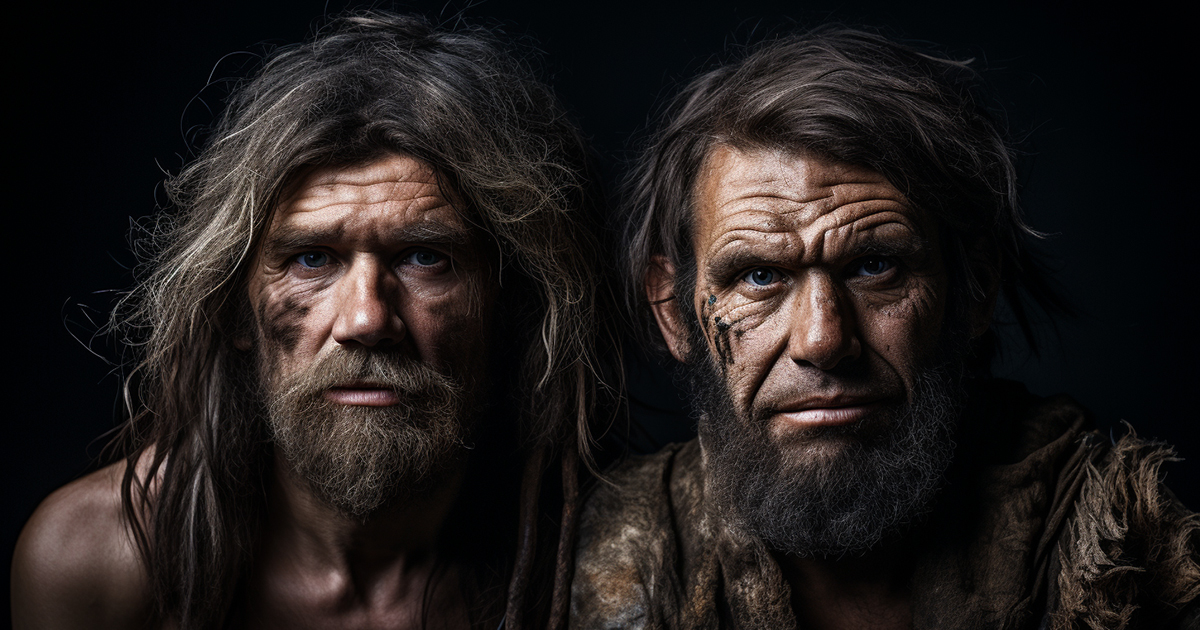Back in 2011, amidst the breathtaking landscapes of Sima de las Palomas in Spain, a remarkable find created a profound ripple within the realm of archaeology.
The discovery was not of a hidden city or a trove of riches but rather a burial ground that housed intriguing stories of our distant ancestors. Within this site lay three figures, their limbs carefully intertwined in a ceremonial manner, shedding light on a deep connection to a history that seemed familiar yet unknown.
Initially thought to be of human descent, a subsequent revelation altered the archaeologists’ perspective – they had stumbled upon the remains of our evolutionary kin, the Neanderthals. This realization raised an intriguing question: had the sophistication of Neanderthals been underestimated?
The precise organization of these Neanderthal burials hinted at something profound – a belief in a possible afterlife, a form of deific reverence. These intricate spiritual notions challenge the conventional portrayal of Neanderthals as primitive beings inhabiting caves.
Despite their sturdy build and reduced height compared to modern humans, Neanderthals possessed larger brains, exhibited signs of intellect, adorned themselves with clothing, showcased compassion by tending to the ailing and elderly, and left behind traces of a developing culture.
By 2014, the investigation into the Neanderthals intensified as scientists analyzed materials from 40 diverse archaeological sites.

Their discoveries unveiled a surprising fact – Neanderthals coexisted with Homo sapiens for an extended period, facing extinction about 40,000 years ago. Contrary to previous notions, their demise was not attributed to cognitive limitations.
Yet, the intrigue continued. In 2013, evolutionary geneticists unraveled another mystery – contemporary human populations carried genetic imprints from both Neanderthals and Denisovans.
This genetic amalgamation left a mark on particular human groups. Neanderthal influences prevailed among European and Middle Eastern populations, while Denisovan influences manifested in mainland Asian groups as well as among Pacific Islanders, New Guineans, and Australian Aborigines.
Contemplating the likelihood of more than mere coincidence in this intermixing arises. Some ancient astronaut theorists propose a controversial notion: the interbreeding among these ancient hominid species disrupted an extraterrestrial experiment involving protohumans, eventually leading to the extinction of all except Homo sapiens.
This proposal indicates that various hominid subspecies were deliberately separated by vast stretches of land to prevent interactions. Forbidden interbreeding could have endangered the essence of the experiment. Was the Neanderthal lineage eradicated to maintain the experiment’s integrity?
These theories resonate in ancient texts, particularly ancient religious scriptures. These age-old writings depict gods or a god creating flawless humans and expressing their wrath when humanity deviated from the path.
Could these narratives hint at remnants of extraterrestrial intervention, an attempt to refine the human species by eradicating significant portions of early humans and commencing anew?
View the Video Below:
The unveiling of Neanderthals at Sima de las Palomas, Spain, has uncovered layers of an ancient puzzle, provoking reflections on our intertwined past and the enigmas concealed beneath the earth’s surface. As we persist in deciphering the mysteries of our primordial past, we may come to realize that our comprehension of the universe and our position therein is far more intricate and interconnected than previously envisioned.
